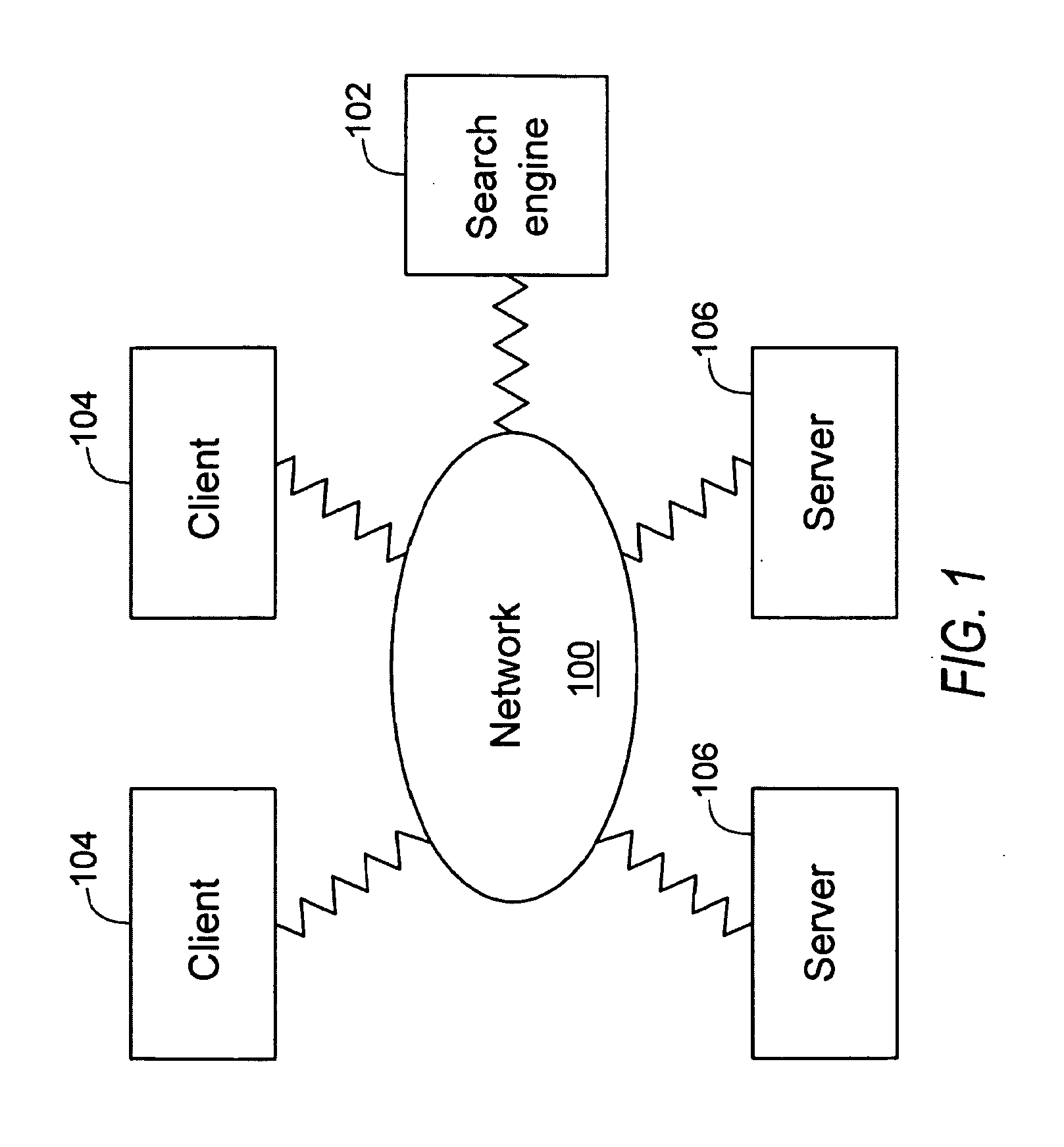Semantic search engine
a search engine and semantic technology, applied in the field of search engines, can solve the problems of increasing the difficulty of users to find documents relevant to their particular needs, the collection of documents is so large, and the return of most queries too many irrelevant documents
- Summary
- Abstract
- Description
- Claims
- Application Information
AI Technical Summary
Problems solved by technology
Method used
Image
Examples
Embodiment Construction
[0018]Embodiments of the present invention can be used to solve the scalability problem described above by combining the knowledge provided in an ontology with the flexibility of a traditional search engine. An embodiment of the invention provides, among other things, methods and apparatus for populating a database, such as a search engine cache, with domain-relevant objects such as documents located on a network, and methods and apparatus for retrieving an object.
[0019]In an example embodiment of the present invention, an internet search engine provides semantic search capabilities through a Web browser, including a standard Web browser. The search engine uses knowledge contained in ontologies to provide a domain specific search.
[0020]Embodiments of the invention provide a semantic search engine, more particularly a domain-specific and relation-based search engine and / or a semantic search engine plug-in. Particular embodiments of the present invention provide a front end for a sear...
PUM
 Login to View More
Login to View More Abstract
Description
Claims
Application Information
 Login to View More
Login to View More - R&D
- Intellectual Property
- Life Sciences
- Materials
- Tech Scout
- Unparalleled Data Quality
- Higher Quality Content
- 60% Fewer Hallucinations
Browse by: Latest US Patents, China's latest patents, Technical Efficacy Thesaurus, Application Domain, Technology Topic, Popular Technical Reports.
© 2025 PatSnap. All rights reserved.Legal|Privacy policy|Modern Slavery Act Transparency Statement|Sitemap|About US| Contact US: help@patsnap.com



